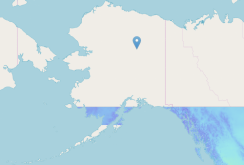Here is a look at t
Ah, I didn't realize the inverter also charged the battery. That's good to know. I guess I may have to get an inverter (or just a charger since I'm not planning on running any AC loads from the 12V) to connect the generator to the 12V battery. Will the inverter/charger know "the battery isn't full and no PV is coming in, so start the generator?"
If it's an inverter/charger, it will charge its source battery. Looking at it again, you don't have the 12V attached to an inverter/charger, so you will need to purchase a suitable AC-DC converter.



